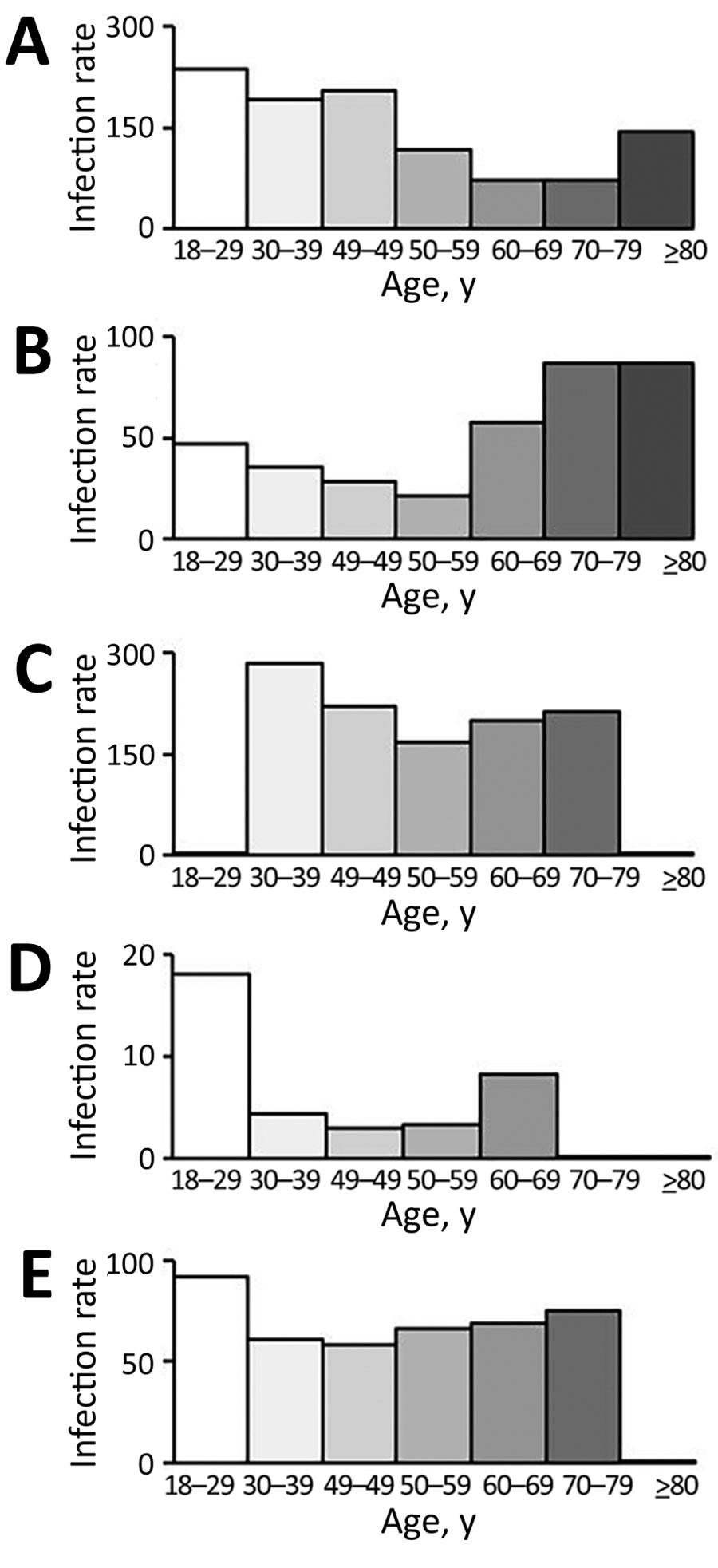Volume 28, Number 3—March 2022
Research Letter
SARS-CoV-2 Breakthrough Infections after introduction of 4 COVID-19 Vaccines, South Korea, 2021
Figure

Figure. Age-specific breakthrough infection rates (cases/100,000 population) of severe acute respiratory syndrome coronavirus 2 for 4 vaccines by vaccine type, South Korea. A) ChAdOx1 nCov-19 (AstraZeneca prime/booster), April–October 2021. B) BNT162b2 (Pfizer-BioNTech prime/booster), April–October 2021. C) Ad26.COV2.S (Johnson & Johnson/Janssen, single dose), June–October 2021. D) mRNA-1273 (Moderna, prime/booster), July–October 2021. E) ChAdOx1 nCov-19/BNT162b2(AstraZeneca prime/Pfizer-BioNTech booster), July–October 2021.
1These authors contributed equally to this article.
Page created: February 08, 2022
Page updated: February 21, 2022
Page reviewed: February 21, 2022
The conclusions, findings, and opinions expressed by authors contributing to this journal do not necessarily reflect the official position of the U.S. Department of Health and Human Services, the Public Health Service, the Centers for Disease Control and Prevention, or the authors' affiliated institutions. Use of trade names is for identification only and does not imply endorsement by any of the groups named above.